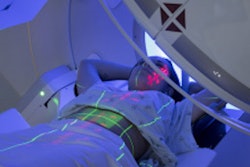
The U.K. Royal College of Radiologists (RCR) has issued guidelines on incidental radiation of the spleen. The 10-page document is free to download from the RCR website.
Although the organ is rarely exposed to radiation intentionally -- and is not typically considered at risk in most radiation treatments -- it can be irradiated via CT-planned therapy for tumors in the lower lung or upper abdomen, according to the authors of the guidelines.
"The guidance applies to all patients who may receive radiotherapy to the spleen as a defined organ at risk as a result of being referred for radiotherapy to the upper abdomen or an adjacent anatomical site where the upper abdomen might also be irradiated," they wrote.
The RCR urges all radiologists to consider the spleen an organ at risk in these cases and to establish protocols if the mean dose of a radiation treatment is higher than 10 Gy.
"The purpose of this guidance is to raise awareness of the spleen as an organ at risk structure and to ensure that, for all patients receiving radiotherapy to the spleen, the risk of resultant functional hyposplenism is assessed and decisions on appropriate management are made if required," the authors stated.
Irradiating tumors in the lower lung or upper abdomen can result in clinically significant doses of unwanted splenic radiation, and radiotherapy teams need to contor the spleen as an organ at risk and to develop protocols for vaccination and antibiotic prophylaxis if the mean dose exceeds 10 Gy, noted Dr. Tom Roques, RCR's medical director for clinical oncology, in a foreword to the document.
He expressed his thanks to the team at University College London Hospital for highlighting this issue and to Drs. Tom Richards, Beatrice Seddon, Mark Gaze, and colleagues for leading the development of this guidance.
You can download the advice free of charge on the RCR website.



















